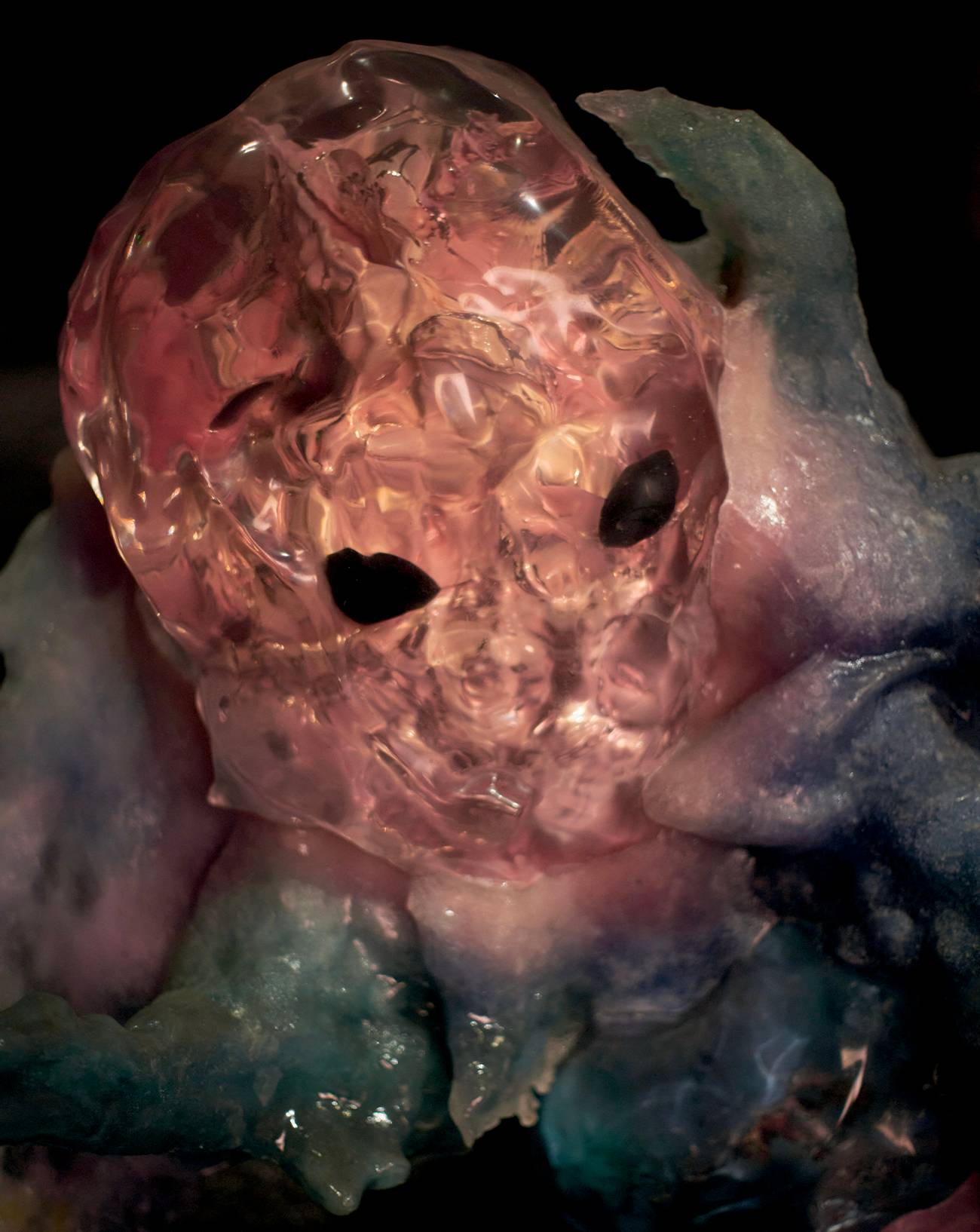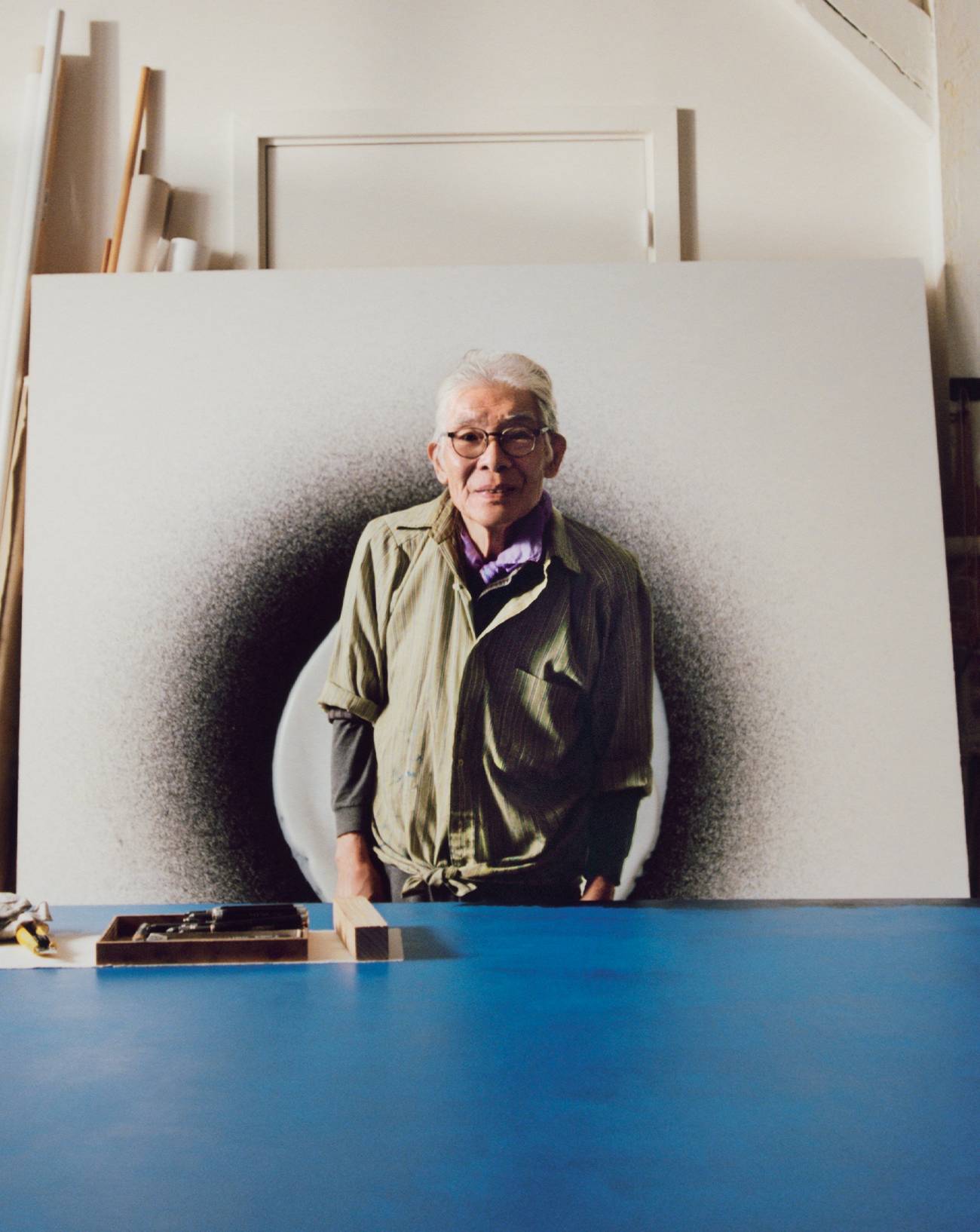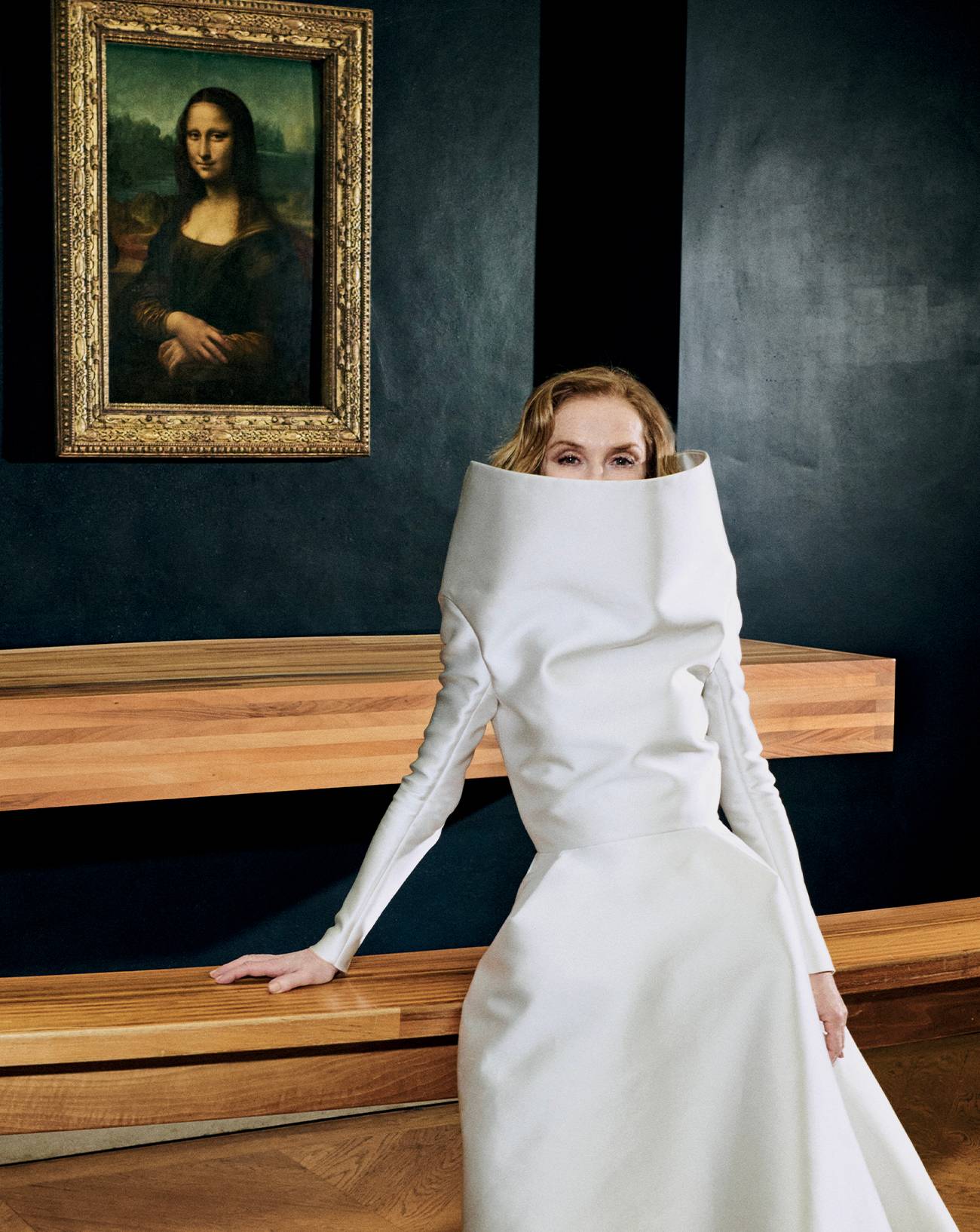© Pauline Shapiro
Thibaut Wychowanok : Your style is striking because of your disruptive use of bold colour. Neon-green work spaces and electric-blue furniture are not everyday sights...
Harry Nuriev : Have you noticed how everything in architecture has to be black and white, except for a few shades of grey? Yet human beings are excited by colour. They are thrilled by sun- sets, a sky that changes from pink to orange, or flowers in a field. Never by grey. When I started to analyse the colours used in interior design, I discovered a very limited range. I wanted a bright blue. I wanted to be crazier, to be freer, to go as far as possible with colour. I didn’t want to limit myself to putting a touch of blue on a pillow in the corner of a room. I wanted the whole room to be blue. To be hon- est, I was disturbed by the result, but it also allowed me to leave my comfort zone. I no longer knew how to feel in that space. Then the industry appropriated it and it became a trend. In the end, people were saying, “Yes, it’s true, this blue doesn’t hurt the eyes. It’s bright. But it’s not a school- yard blue either. It’s elegant.” I did the exact same thing with neon green, a colour that used to be totally forbidden in interior design. Yet the result is very beautiful.
© Crosby Studios / Harry Nuriev. Courtesy of Aurélie Julien Collectible.
How do you go about starting a project?
First of all, my work consists in getting a feel of the space, its energy. I never start by doing research. We miss out on a lot of things because we analyse everything too quickly. We use our computers more than our hearts. By following my emotions, I can envision a powerful atmosphere. My professional skills only come into play later, when it comes to logistics or comfort. I work like a painter or an artist. I think in terms of colour, effects, composition. I think in terms of highlights, like in a musical score.
What inspires you?
People are of course an essential source of inspiration for me. The second is nature – notably through colour. The third is all those domestic objects that people don’t pay attention to, that they find boring or uninteresting.
1. © Crosby Studios / Harry Nuriev. Courtesy of Aurélie Julien Collectible. 2. © Crosby Studios. Courtesy of Harry Nuriev. 3. © Crosby Studios / Harry Nuriev. Photo : James Harris.4 et 5. ©Crosby Studios / Harry Nuriev. Courtesy Aurélie Julien Collectible
"I work like a painter or an artist. I think in terms of colors, effects, compositions. I think in highlights, like in a piece."
You founded your design office, Crosby Studio, in 2014. What was your ambition?
It all started with a very personal observation: the design world did not offer the same diversity and creativity as fashion. I wasn’t satisfied or happy with what I saw. There was something missing. Something strong. Basically, you could choose between a classic, old-school style and white minimalism. We spend 90% of our time in designed spaces and we should settle for that? Why aren’t there as many design styles as there are clothing styles? No one had trans- lated the creative variety of fashion into design before. That’s what I wanted to do: to dress spaces like a stylist or designer dresses a muse, not just to decorate them. People dress in dark, gothic, floral or conservative styles, but they all live in the same interiors. Why should we use the same wardrobe for Balenciaga clothing as for a Rick Owens en- semble? Our homes should also be an extension of our personality.
© Crosby Studios / Harry Nuriev. Courtesy of Aurélie Julien Collectible.
With you, a children’s swing becomes a seat, computer keyboards become mirror ornaments – you work by translating, by displacing.
In an article published in 2017, The New York Times de- scribed me as the voice of “global minimalism.” I was very honoured. I like minimalism. My work may be minimal but it’s not minimalism per se. I’ve thought about it a lot since. I would say that the style I created could be summed up in one word: “transformism.” All my work derives from the idea of transformation, i.e. the transition from one form to an- other. Design and designers play a specific role in the times they find themselves in. Our time calls for reassessing and liberating the world of what already exists. We no longer need to invent new forms. From the Renaissance onwards, all the forms we have today were invented. We don’t need any more technological innovations – the technology is already there. We don’t need to reinvent the wheel. Instead, we need to recycle all these objects, all these ideas and all these forms. Let’s gather together all the good ideas and give them a second lease of life. That’s what I call “trans- forming” – when you take an air conditioner and turn it into a jewellery box for example.
"I'm just sabotaging the whole rules of interior design. I'm disrupting them with things that aren't supposed to be there."
Crosby Studios / Harry Nuriev. Courtesy of Aurélie Julien Collectible.
Hair and makeup: Richard Blandel at B. Agency. Retouching: Nitty Gritty, Berlin.
So you don’t transform just any old object. Design afi- cionados never focus on office chairs or those used for playing video games, yet you turn them into stylish, couture objects of sorts when you collaborated with Balenciaga in 2018 for Design Miami. The normcore office and gaming culture was making inroads into the well-mannered world of collectors. There is a social, almost political dimension to this...
To be perfectly honest, I’m only sabotaging all the rules of interior design. I disrupt them with things that aren’t sup- posed to be there. We live in a world where everything is required to be minimal, where everything has to look like a perfect egg. A few people have the power to decide whether an object should disappear, whether its shape is ugly. So yes, maybe the shape is ugly, but let me show you some- thing: it can be made beautiful. The design world is under- going the same revolution that the fashion world did in the 1970s. Ten years ago, design was the preserve of the happy few. You had to hire such and such an interior decorator. There was really little choice. It was a question of social status rather than personal taste. But, like with clothes, design today has become more mainstream. You find it in department stores. People are taking an interest in it, start- ing to make their own choices, to develop their own taste. The future of interior design is bound to involve more and more style options. And what’s more, it will be very easy, because anyone can put up wallpaper. I must say, I’m very happy to be part of this movement.
Inauguration of a room designed by Harry Nuriev at the Hotel La Louisiane, Paris. During Paris +. Exhibition at Art Basel Miami Beach. December 2022. Exhibition at Carpenters Workshop Gallery, Paris. January 2023.




































